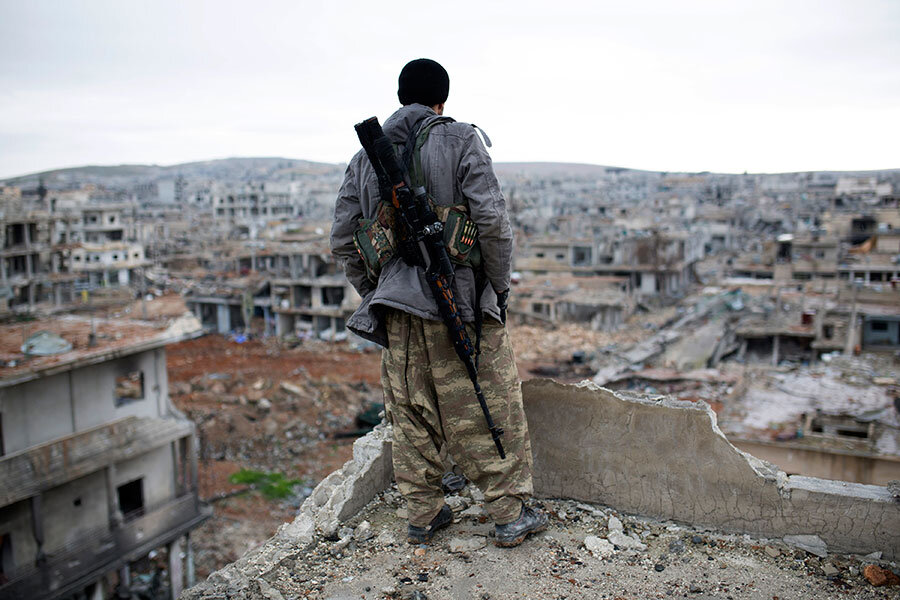How 50 US troops in Syria could actually make a difference
| Washington
The announcement that President Obama has authorized a busload-sized contingent of United States Special Operations Forces to deploy to Syria to “advise and assist” rebel forces has raised questions about what difference 50 people can really make in the Syrian war.
After all, they are essentially arrayed against the Syrian government, with its own army and Russian troops in direct support, not to mention Iran-backed Hezbollah militants. The Islamic State, meanwhile, has thousands of soldiers and a basic government infrastructure at its disposal.
A number of Republican lawmakers have essentially called the Special Forces deployment window dressing. It is “an incremental change that will not change the conditions on the ground,” said Sen. Lindsey Graham (R) of South Carolina in an appearance on MSNBC.
But experts say the troops could well be more than a token deployment. Specifically, their goal is to support a rebel alliance that has demonstrated concrete success in taking on Islamic State targets. And while about four dozen US troops “is a pretty marginal contribution of forces, what they may be able to do is cooperate more effectively with [rebel] forces on the ground,” says Emma Ashford, a visiting fellow in defense and foreign policy at the Cato Institute in Washington.
The US hopes to increase its influence and leverage with rebel forces that include Syrian Kurdish fighters aligned with Arab Free Syrian Army (FSA) forces. Together, the two groups have shown promise retaking some villages from the Islamic State along the Syrian-Turkish border, notes Nicholas Heras, a research associate in the Middle East Security Program at the Center for a New American Security.
The Kurdish and FSA forces have formed a joint operations center for war planning and have proved they can form an effective multiethnic front, now known in policy circles as the Kobane model, since the FSA assisted the Kurds in defending Kobane, Syria, from the Islamic State in 2014.
It was a point emphasized by White House. “These forces did not just drive ISIL out of Kobane; they drove them out of the broader region,” White House press secretary Josh Earnest noted last week, using one of the acronyms for the Islamic State. “We’ve also seen these opposition forces make progress in the direction of Raqqa,” the self-declared capital of the Islamic State in Syria.
The opposition forces are now about 27 miles outside of Raqqa, according to US officials.
US Special Operations Forces “can provide reassurance to allies that the US has a strong finger on the pulse” of Syrian Kurdish forces, Mr. Heras says. This is important to reassure Turkey, which views the Kurds with suspicion, given that Kurdish groups in Turkey have acted as separatists.
The Special Operations Forces have considerable experience from Afghanistan and Iraq. They could provide feedback about “how to approach the campaign” for the rebel forces, as well as “real-time, on-the-ground data back to the United States in terms of what the issues and problems are,” Heras adds.
The concern is the extent to which the US can protect the forces it is sending. “The White House is saying that it’s not going to be a combat mission, but what we’re seeing [in the region] is that any trips going in there can end up in combat, even if they’re supposed to be advising,” Dr. Ashford says.
“I’m sure that we’ll develop a slightly better picture of what’s going on in Syria,” she adds. “The question is at what risk to US troops just for that small benefit.”









